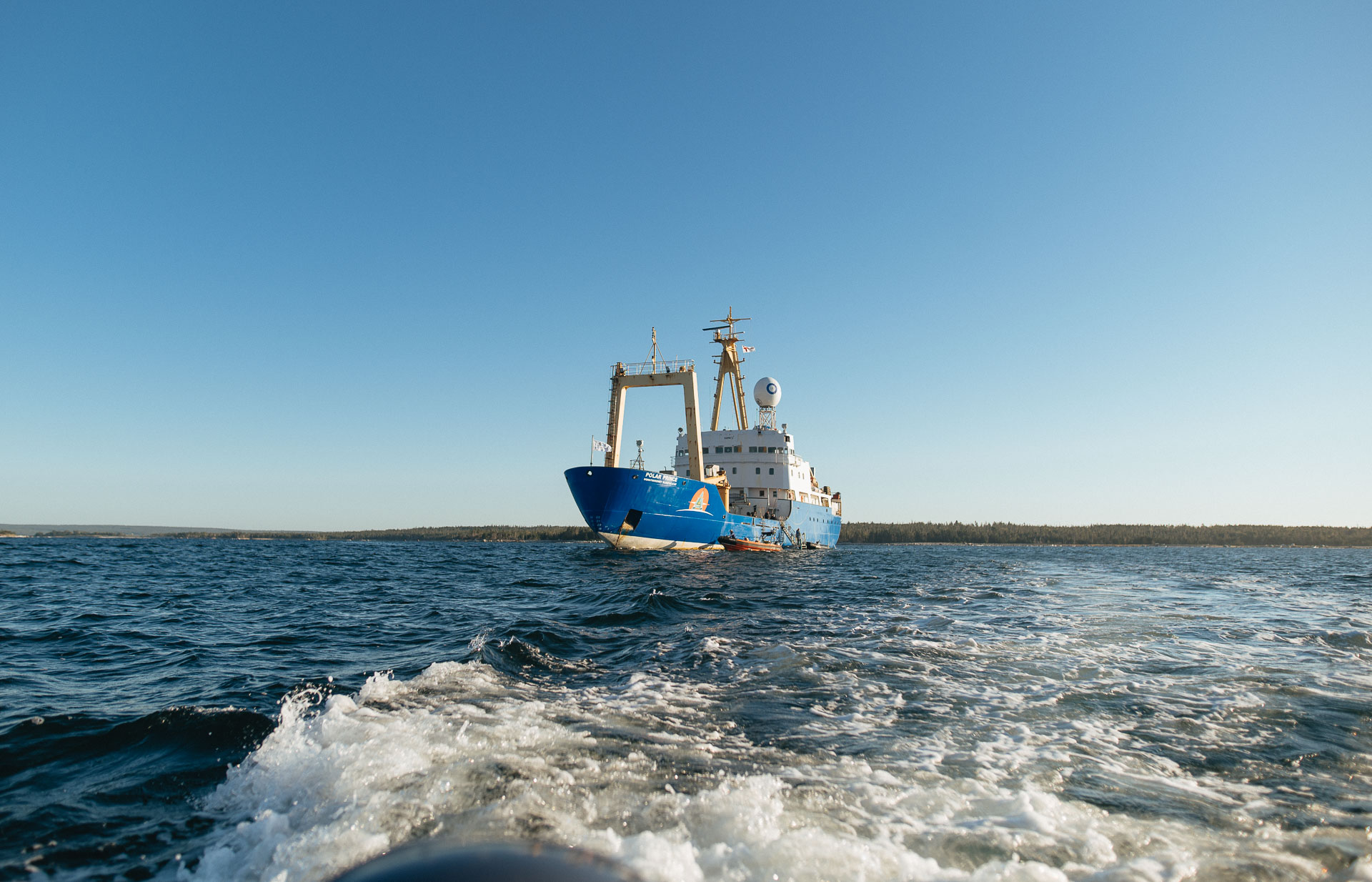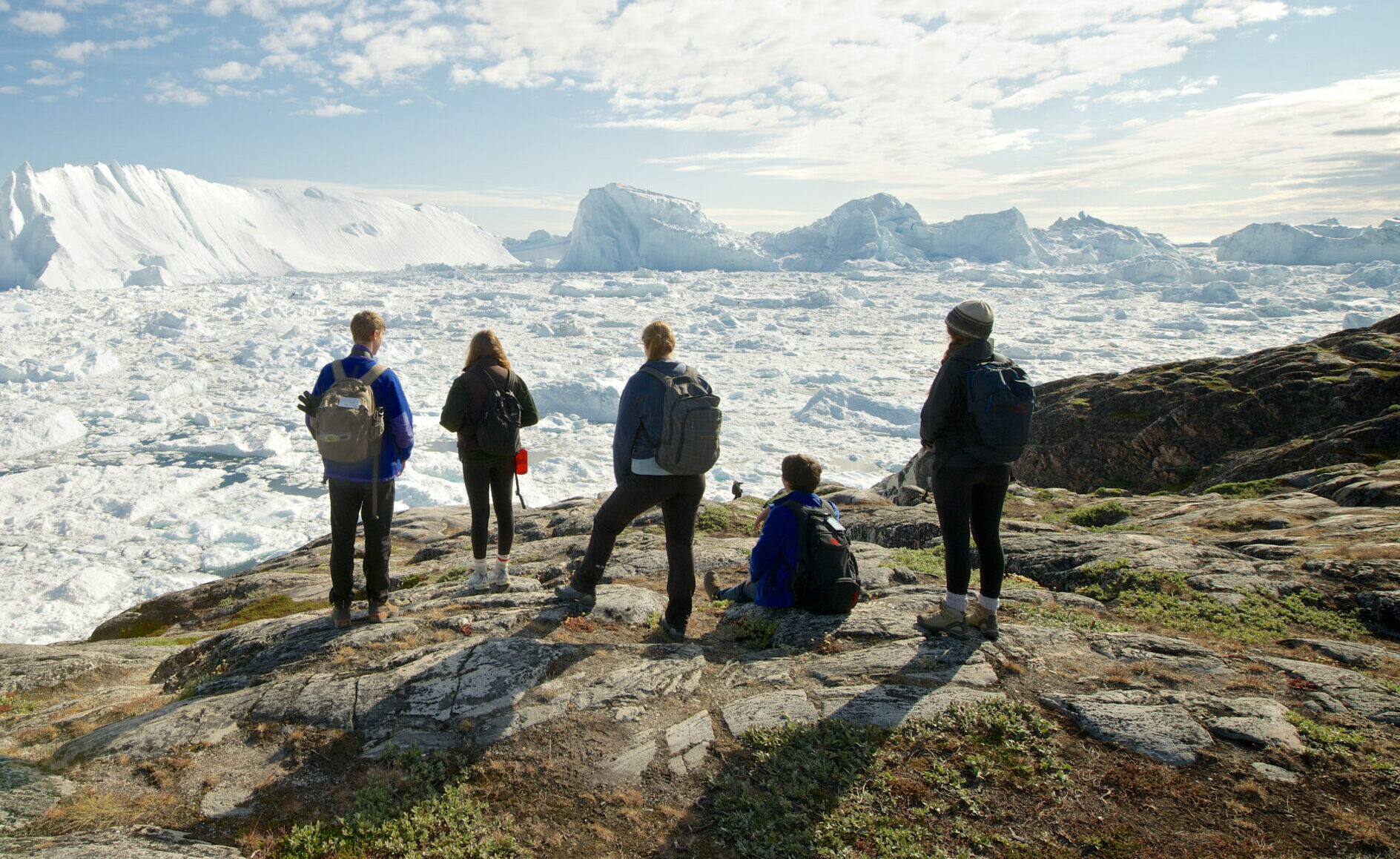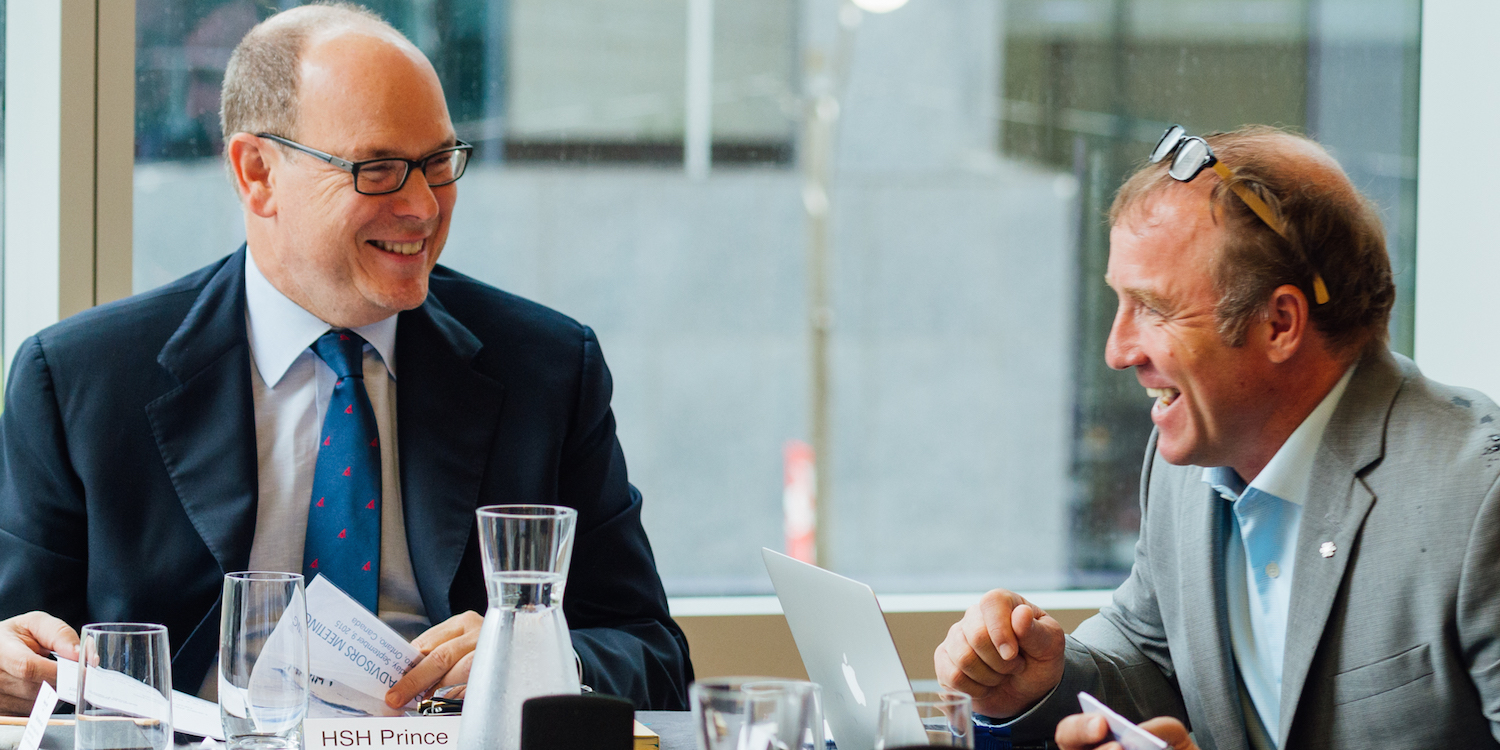Blue Futures Pathways Newfoundland and Labrador Expedition: Full Recap
What would it mean to have an ocean economy that’s environmentally, socially, and economically sustainable, and how can young people take part in shaping it?
Those are the questions that guided us through the 10-day Blue Futures Pathways (BFP) expedition from Happy Valley-Goose Bay to St. John’s, in Newfoundland and Labrador.
As an endorsed action of the United Nations Ocean Decade, SOI Foundation’s BFP program contributes by connecting young people with education, employment and funding opportunities to inspire and support them in developing successful careers in the Sustainable Blue Economy.
The expedition took 47 participants to remote coastal and Indigenous communities, ecological reserves, as well as national parks and historic sites. The team consisted of Indigenous and non-Indigenous youth aged 17-30, advocates, scientists, industry professionals, educators and staff from all over Canada, as well as four Americans. Below are some of the key lessons from the expedition.
The Importance of Two-Eyed Seeing
Ken Paul, a member of the Neqotkuk Wolastoqey First Nation, proposed a Sustainable Blue Economy framework that is based on the four chambers of the Medicine Wheel, as well as the Two-Eyed Seeing concept.
Called Etuaptmumk in Mi’kmaq, the term was coined by Elder Albert Marshall, his late wife Murdena Marshall, and biology professor Cheryl Bartlett. It refers to seeing the world with the strengths of both Indigenous ways of knowing and Western ways of knowing for the benefit of all.
“From time to time, there will be conflict between the two knowledge systems. It’s working through that that’s important,” said Ken, whose expertise is in Treaty-protected rights for fisheries and other ocean resources.
Ultimately, the framework Ken proposed puts forth a balance between the four pillars of sustainability: good governance, environmental protection, social equity, and economic viability.

Science and Technology Are Key Tools For Climate Adaptation
With climate change rapidly impacting the ocean, technology has become a key tool to help communities adapt and understand the changes in their environment.
In St. John’s, we visited SmartICE, a social enterprise that couples technology with traditional Inuit knowledge to increase ice safety for communities in the North. This helped us understand how climate change has altered travel and hunting on the ice. SmartICE’s SmartBUOYS and SmartQAMUTIQs use sensor technology to detect ice thickness and other information. The data can then be uploaded to Arctic Eider’s SIKU, a mobile app and web platform made by and for Inuit that serves as a tool for ice safety, language preservation and weather monitoring.
During the visit to the Nunatsiavut community of Rigolet two days later, we learned the impact of these changes. We met SOI alumni Jacqueline, who is also an Inuit research coordinator with Sustainable Nunatsiavut Futures (SNF). SNF is a project out of the Ocean Frontier Institute, co-led by the Nunatsiavut Government, Dalhousie University and Memorial University, that looks at the impact of changing environmental conditions on Northern communities.
“Before, people predicted when the ice was safe and not safe at a certain month,” said Jacqueline. “These days, you can’t depend on what you used to know because everything is changing so fast.”

Jacqueline had set up a seal harvesting workshop. Seal as a food source keeps folks living in the North warm. The skin also has many purposes, including warm clothing like pants, mitts and parkas.
It’s clear that the ocean, frozen or otherwise, provides this community many resources for sustenance.
Technology can also help us understand the ocean and its inhabitants. For example, a remotely operated underwater vehicle (ROV) might be able to go deeper than humans can, and stay in the water longer, and therefore collect more data to help us understand the changes in the ocean. Underwater hydrophone technology can help monitor noise pollution and its impact on marine mammals.
In Witless Bay Ecological Reserve, we heard that researchers are using tracker technology to understand the behaviour and movement of bird populations that nest across the reserve’s four islands. The reserve hosts the largest Atlantic Puffin colony in North America, the second-largest colony of Leach’s Storm-petrels in the world, and thousands of Black-legged Kittiwakes and Common Murres.
“Right now the Atlantic Ocean is 7 percent warmer than last year,” said reserve interpreter Chris Mooney. “We’re seeing birds that should not be here showing up because of climate change.”

Industry Can Play a Role
Ocean-based industries are very important for Canada. It currently generates about $32 billion in GDP a year. But what change can we implement to make a significant dent in their carbon footprint?
That was a question that Dr. Sherry Scully posed as she led activities and discussions about the commercial marine transportation industry. Sherry is the lead writer of SOI Foundation’s Blue Futures Pathways learning modules, and is now Director of Workforce Development for the PIER, Port of Halifax’s centre for innovation, planning and strategy.
We discussed the impacts of the sector as it is today, its important role in the supply chain, the effects of consumption trends, innovations aimed at making the sector less harmful for the environment and risks faced by the industry.
Reducing consumption, and making large sectors like marine transportation more sustainable by switching to renewable fuels and making ships less noisy could have a big impact, she noted.

Kendra MacDonald, the CEO of Canada’s Ocean Supercluster, also highlighted various opportunities to innovate within the Sustainable Blue Economy. From ocean mapping and fish-waste processing to artificial intelligence, industry players are part of the solution to many of the challenges facing the ocean.
Unfortunately, “one of the challenges of the ocean economy is that most Canadians don’t understand it, don’t pay attention to it, and don’t understand the opportunities and risks in it,” she said.
There Are Many Pathways to Sustainable Blue Economy Careers
Whether it’s policy, science, community engagement, media and communications, art or technology, the expedition showed us that there are a myriad of ways for young people to engage with the Sustainable Blue Economy.
“You don’t even have to be on the water to do work related to the ocean and water,” said Sherry.
Youth participant Greg Ford, who is the Director of Water Programs at Swim Drink Fish, shared that seeing pollution in his favourite lake led him to a career in water conservation.
“Think about the water and how it will guide you in your career,” he said.
The path to your dream career or calling is often not linear. It’s more of a zig-zag of closed doors and opportunities. In fact, many of the educators and staff on board didn’t start their careers in the marine industry, but they brought a lot of their skills and knowledge from different sectors into the Sustainable Blue Economy.
Some of the educators have a passion and interest in the ocean sectors to begin with, but their careers paths have not been linear.

Neha Acharya-Patel, Ph.D. candidate and co-founder of the Canadian node of the United Nations’ Early Career Ocean Professionals program (ECOP), marries her passion for diving, the environment and youth engagement as a commercial diver.
Lisa Chen decided that launching her own social enterprise, Oceanic Impact, was a way for her to help fill the gaps she saw between policy, ocean and conservation.
Sometimes, short-term contracts can lead to life-long careers.
Jeff Anderson’s six-month contract with Parks Canada became a 30-year career. He was Vice President of Operations for Western and Northern Canada when he retired.
“We never know what happens in our lives and how our lives change,” he said. “If you come across roadblocks, keep on going.”
The diversity of career pathways gave us much hope about what’s to come.
“For the first time in a long time, I feel excited about my future,” participant Zsofi said.
There Are Many Factors To Consider In Development And Conservation
Over thirty years on, many coastal communities in Newfoundland and Labrador still live in the shadow of the cod moratorium. The policy was put in place to help restore cod stocks that had been overfished. But it also put about 30,000 people out of work. The cod stocks remain critical today, and many communities have had to find new economic bases to sustain themselves.
In Battle Harbour, a restoration and re-skilling process allowed for a tourism sector to emerge. The Battle Harbour Historic Trust now offers seasonal employment in the tourism sector to locals.
Francois, a beautiful community located at the end of a small fjord, also tries to attract tourists. Despite a declining population, the community continues to refuse relocation offers from the government.
Other industries that were not environmentally sustainable have also been replaced over centuries.

Red Bay was once a hub for Basque whalers who sold whale oil to Europe in the 16th century. With the overall right whale population severely depleted, whaling is no longer an option. The community instead sought and gained a UNESCO World Heritage designation. The National Historic Site relies on this whaling history to attract approximately 12,000 tourists a year.
“Red Bay is all about tourism now,” says Mayor Wanita Stone.
In Witless Bay Ecological Reserve, the establishment of the ecological reserve in 1983 meant nearby community members can no longer hunt on the islands. However, the bird colonies have become an attraction for tourists, and allowed a new industry to emerge in the surrounding communities. The town of Witless Bay now welcomes visitors from all around the world who want to see birds and whales in the area.

In Stephenville, Mayor Tom Rose laid out the dichotomy of his community.
“If you’re not growing, you’re dying,” he said.
Stephenville is part of Project Nujio’qonik, a green hydrogen project by World Energy GH2 that will be located in the Bay St. George area. The project will use wind energy to produce green hydrogen and liquid ammonia that can be used as renewable fuel for ships and other purposes.
There are many factors to think of in such developments. During our visit, expedition participants asked company and town representatives about everything from housing for workers and locals, the short-term and long-term environmental impact, to access to the estimated new jobs for locals and others.
As we considered sustainability and factors of social equity, we also discussed the impact large projects might have on rural communities in need of an economic boost.
For Chief Mi’sel Joe of Miawpukek First Nation (MFN), it’s important to have the resources to maintain Mi’kmaq culture and give community members access to decent livelihoods.
MFN owns the Polar Prince, the vessel that carried us in the expedition. Through a partnership with Horizon Maritimes, the vessel serves as a platform for educational expeditions such as ours, and provides training opportunities for Miawpukek members who want to work on a ship.

In a way, MFN is drawing from its own tradition of maritime travel. On the ship, we watched a movie about Chief Joe’s journey to St. Pierre & Miquelon with other members of the nation, in a traditional Mi’kmaw birch bark canoe.
“We’re people of the land and people of the ocean,” Chief Joe said.
From MFN councillor Greg Jeddore, we also learned about the nation’s marine conservation efforts.
Our visit to Conne River was a special one as it was the first time the vessel sailed to its home community since MFN bought it. Community members took turns touring the ship as our expedition team learned about Mi’kmaw culture on land.
We also witnessed the signing of a socio-economic agreement between MFN and Marathon Gold, which owns the Valentine gold mining project nearby. The agreement provides access to employment and other economic opportunities by Miawpukek members and businesses, education and training, environmental stewardship and monitoring, and cultural investment, among other things.
Chief Joe says it “hurts” to have to sign such an agreement because “once you dig, it will never be the same again.”
Understanding the history, cultures, livelihoods and economic needs of coastal communities helped us better contextualize what a truly Sustainable Blue Economy means.
We Can All Play A Role
On our last night together, we shared our reflections and learnings with each other.
“I realized I have a lot to give,” Kaylee said.
“I thought I knew a lot about the Sustainable Blue Economy, but I learned that it’s so much more than that,” said Kiersten.
The diversity of the expedition team allowed us to learn from each other, and unite under the same vision of a Blue Economy that’s sustainable for social, economic and environmental purposes. As Tara said, “we’re all connected to the ocean and bodies of water.”





